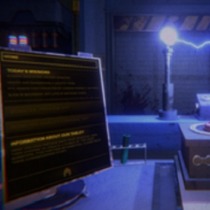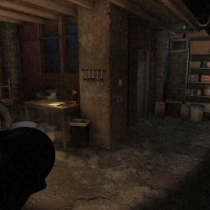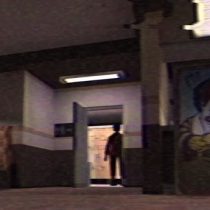THE DEADSEAT
Advertisement
Advertisement
Game information

The Deadseat begins with the player seated in the back of a moving car. Outside, the road stretches forward without end. Inside, the player holds a handheld game console. The first impression is stillness — a confined space with nowhere to go. But as the minutes pass, small details begin to shift. The game on the console starts to behave differently. The car ride, once routine, starts to feel connected to something else. Neither space can be trusted on its own.
Divided Attention, Limited Time
Gameplay in The Deadseat is built around managing both what happens on the screen and what unfolds in the car itself. The handheld console must be used to interact with events that gradually echo beyond the screen. At the same time, the car begins to present threats of its own. The player must respond to both areas quickly, without knowing which one holds the greater risk. The pressure grows not through motion, but through tension between the two views.
Gameplay Elements Found in The Deadseat
- Real-time experience set inside a moving car
- Handheld game device that mirrors or triggers real-world changes
- Environmental cues that react to player inaction
- No exploration or combat — only reactive observation
- A single continuous session with escalating difficulty
- Hidden details that only appear if the player looks away from the console
- Optional hard mode with extended duration and altered pacing
- Use of silence, audio cues, and minimal visuals to guide player focus
- Interplay between digital distraction and physical presence
- Storytelling through subtle interaction and moment-to-moment awareness
These mechanics create a structure where observation becomes the core mechanic.
Movement Without Escape
The vehicle in The Deadseat never stops. The landscape outside is always in motion, yet the player remains seated, watching and reacting. The challenge is not to flee but to stay aware. What begins as a quiet ride grows unstable. The player cannot leave their seat, yet the experience begins to demand more than just watching. The handheld device is a tool, but not a solution. Attention must shift again and again, with no guarantee of safety in either direction.
An Ending That Leaves Space
When The Deadseat ends, no resolution is given. There is no final scene that confirms what was real and what was imagined. The ride concludes, but what happened in the backseat is left unclear. The game does not rely on plot explanation. Instead, it creates a sense of unease that lingers beyond the session. The quiet at the end may feel different depending on how closely the player paid attention. The story, if there is one, is told through how long the player looked away.
Related games
Comments

































